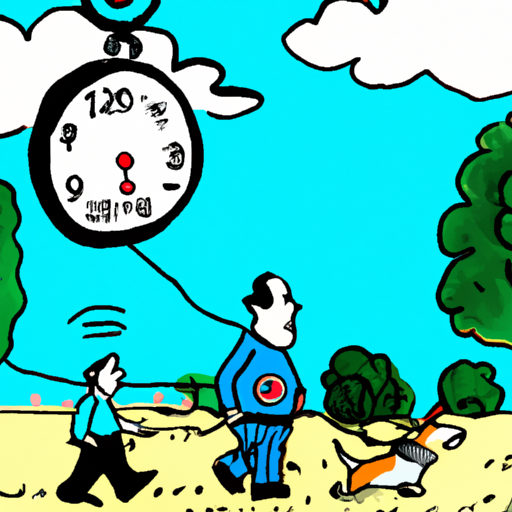A question that has been puzzling dog owners for centuries: how long should I walk my dog? As a caring and responsible owner, you want to ensure your furry friend’s needs are met, but you might be unsure about the right amount of exercise for your canine companion. This guide will provide you with the insights you need to understand how to establish a healthy walking routine for your dog.
Understanding Your Dog’s Exercise Needs
Every dog is unique and so are their exercise needs. The amount of time you should walk your dog can depend on several factors:
- Breed: Some breeds require more exercise than others. High-energy breeds like Border Collies and Labrador Retrievers may need more than an hour of exercise each day, while less active breeds like Bulldogs may require less.
- Age: Puppies and younger dogs generally have a lot of energy and may require several hours of exercise each day. Older dogs, on the other hand, might not be as energetic.
- Health: Dogs with health issues may not require as much exercise, while healthy dogs might need more to keep fit.
Factors Influencing the Length of the Walk
Beyond understanding your dog’s exercise needs, several other factors can influence how long you should walk your dog:
- Weather: In extreme weather conditions, the length of the walk should be adjusted accordingly.
- Your Dog’s Behavior: If your dog is restless or showing signs of destructive behavior, it might be an indication that they need more exercise.
- Your Schedule: It’s important to balance your dog’s need for exercise with your own schedule. It’s better to have shorter, more frequent walks than one long walk.
How Long to Walk Different Breeds
Here’s a general guide for walking different breeds. Remember, these are averages and individual dogs may require more or less.
| Breed | Average Daily Exercise Needs |
|---|---|
| Border Collie | 2 hours |
| Labrador Retriever | 1-2 hours |
| Bulldog | 30 minutes to 1 hour |
| Bichon Frise | 30 minutes |
| Greyhound | 1 hour |
Walking Puppies and Young Dogs
Puppies and young dogs generally have a lot of energy, so they might require more exercise. However, it’s important to be careful not to over-exercise them as their bones and joints are still developing. A good rule of thumb is a ratio of five minutes exercise per month of age up to twice a day.
Walking Senior Dogs
Senior dogs may not require as much exercise, but they still benefit from regular shorter walks. For older dogs, the focus should be on maintaining mobility and quality of life rather than on exercise and fitness.
The Importance of Mental Stimulation
Walks are not just about exercise – they’re also an important opportunity for dogs to explore their environment, so it’s good for their mental stimulation. You can enrich your dog’s walks by varying the routes and allowing them to sniff and explore.
FAQ
Q: Can I walk my dog too much?
A: Yes, overexercising a dog can lead to health problems, especially in puppies whose joints are still developing. Watch for signs of tiredness and don’t push your dog to exercise if they’re not up to it.
Q: What if my dog doesn’t like walks?
A: Some dogs may not enjoy walks due to fear or lack of socialization. You can work on making walks more enjoyable by using positive reinforcement and gradually introducing your dog to new environments.
Q: Can I walk my dog twice a day?
A: Absolutely. In fact, many dogs enjoy having two shorter walks a day rather than one long walk.
In conclusion, the amount of time you should walk your dog can vary greatly depending on their breed, age, and health. Regular walks are important not only for your dog’s physical health but also for their mental well-being. As a caregiver, it’s your role to ensure that your dog is getting the right amount of exercise for their individual needs. Happy walking!



